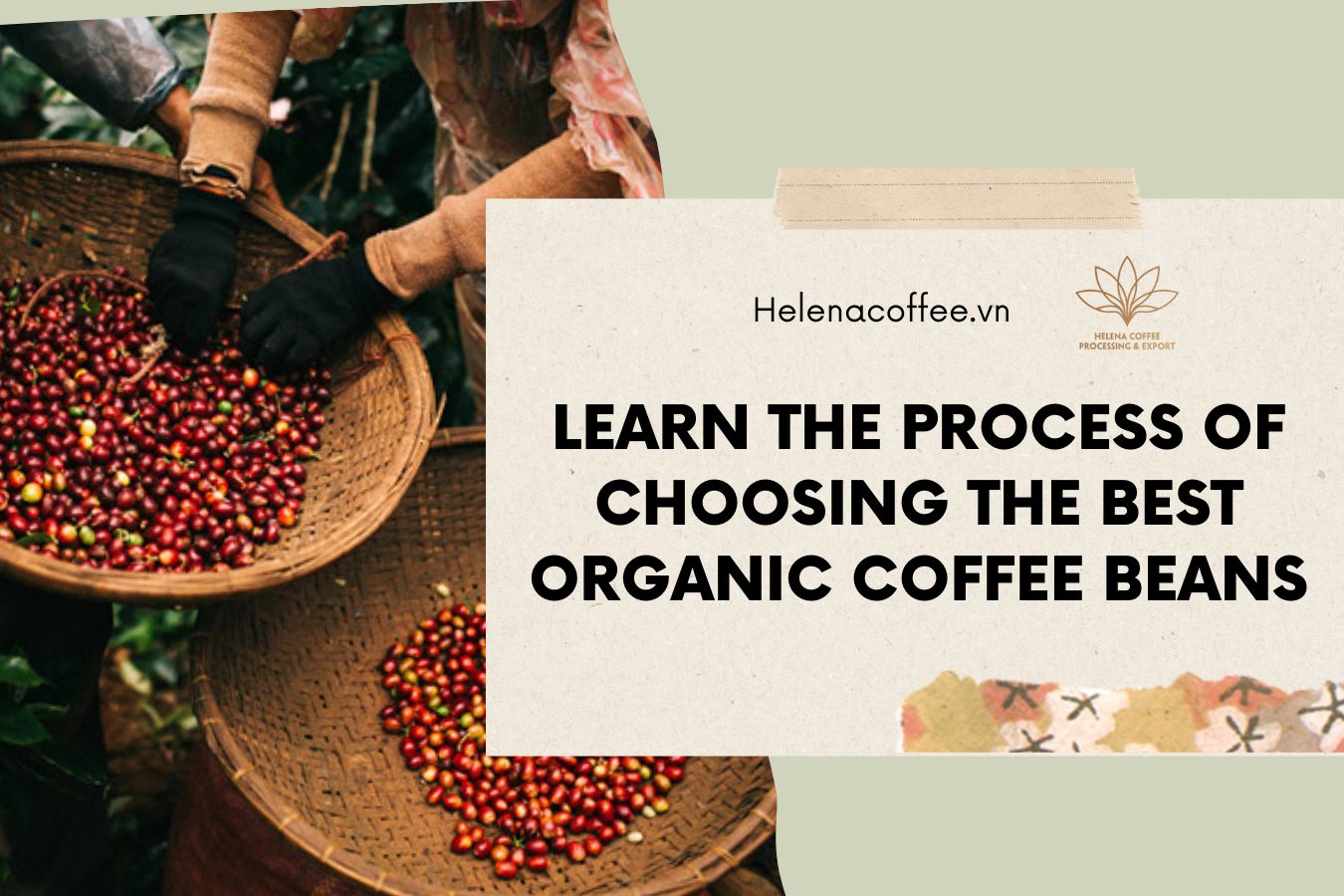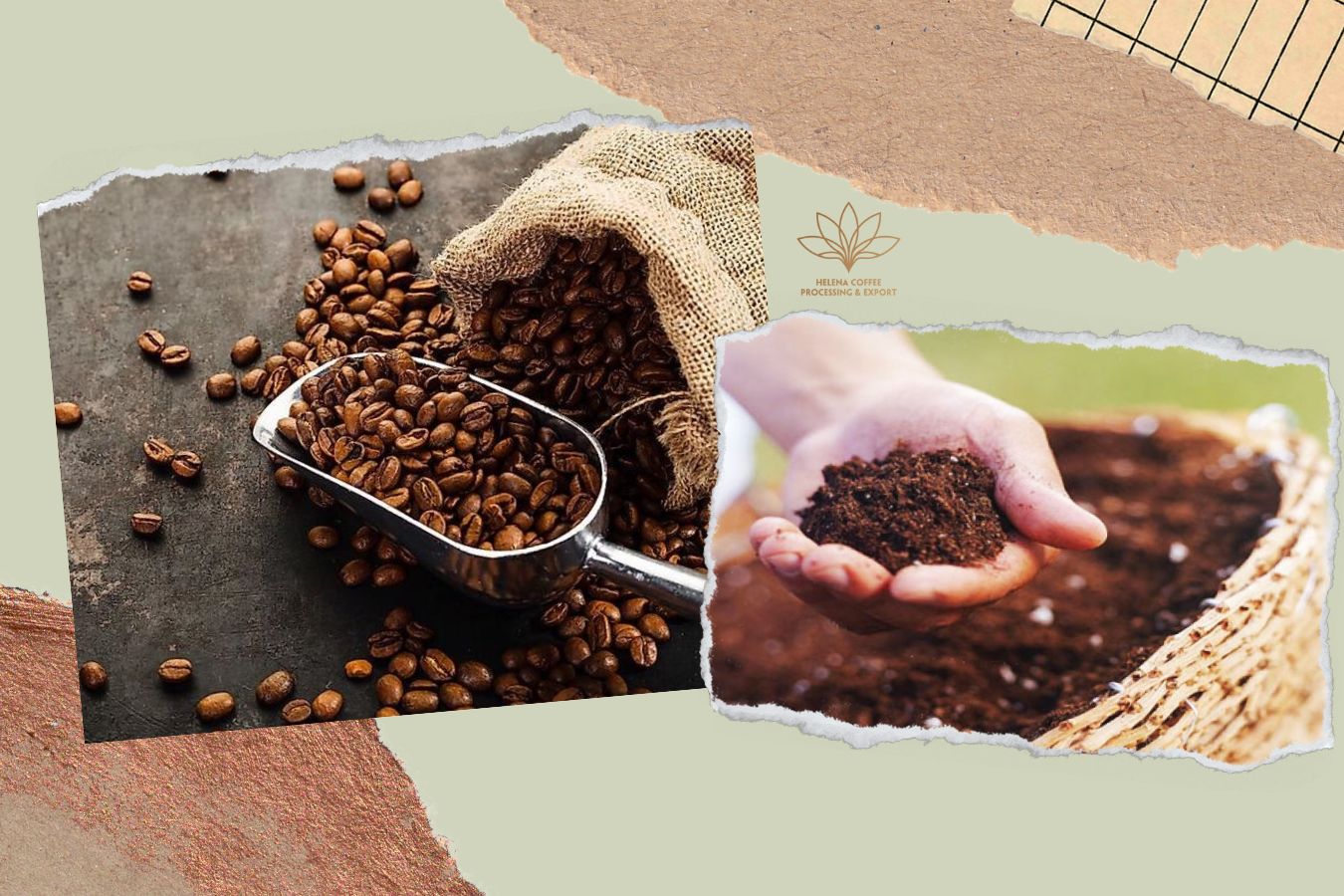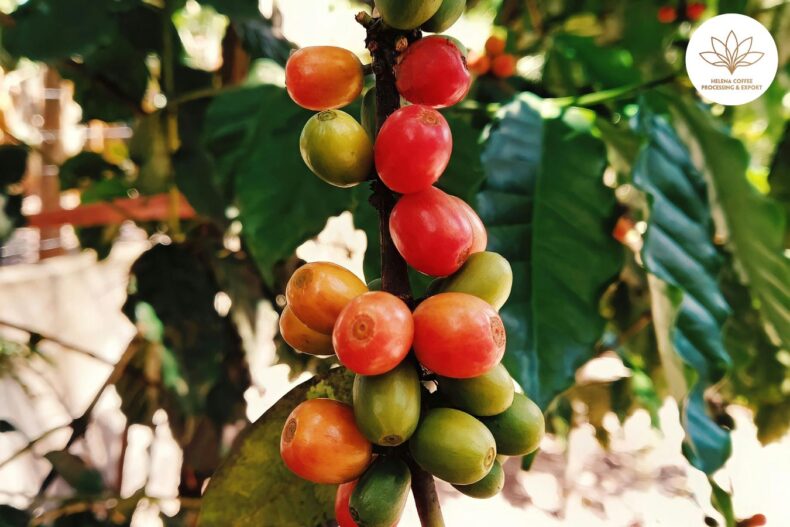
Certainly, coffee users care mainly about the quality and taste of the product. However, this article will help you understand more about how to choose the best organic coffee beans, a type of coffee that is grown naturally without the use of chemicals and harvested in an environmentally friendly way. Please join us Helena Coffee to discover more about this type of coffee!
What is best organic coffee beans?
A type of coffee grown and processed according to organic principles and processes. This means that in the process of growing and caring for coffee trees, farmers do not use synthetic chemicals such as chemical fertilizers, pesticides, or herbicides. Instead, they focus on using organic fertilizers, natural fertilizers and other natural measures to protect coffee trees and soil.
This coffee is typically grown in sustainable agricultural systems that focus on maintaining the natural balance of the environment. This includes maintaining biodiversity, protecting land and water resources, and minimizing negative impacts on the environment.

Choosing organic coffee is also beneficial to consumers’ health, as it does not contain chemical residues from the growing process. This coffee is generally considered to be of higher quality and offers a more natural and delicious coffee experience.
How is organic coffee produced?
Organic coffee is considered the top choice from developed countries with notable advantages. To create organic coffee beans, farmers carry out a series of careful processes:
Farming process
Organic coffee farming requires farmers to create a natural growing environment for the plants, without using toxic chemicals. This requires strict control of the coffee cultivation process, ensuring cleanliness and safety for the growing process.
Choosing clean soil and water, free from toxic chemicals is important. It is necessary to find uncontaminated land from residential or industrial areas.
To avoid harmful pests, farmers create favorable conditions for the natural enemies of pests. Usually, they use microbial fertilizers or herbal pesticides to protect the plants without affecting the quality of the coffee.
Roasting process
The roasting process for organic coffee is similar to regular coffee, but does not use additives or flavors. People often set up a separate process for organic coffee, completely different from conventional coffee.
Preservation process
The process of preserving organic coffee is always done carefully to ensure fresh taste, without causing changes in quality and taste. Normally, after roasting, coffee is allowed to cool and then packaged in a one-way valve bag for preservation.
What are the benefits of this coffee line?
First, it benefits human health because it provides large amounts of nutrients, antioxidants, vitamins and minerals. It is important to mention that the quality of coffee is higher than other types, thanks to the special farming and harvesting process outlined earlier. This is evident in its acidity and characteristic flavor, making this coffee easy to appreciate.
Furthermore, this type of coffee makes a positive contribution to the environment. Its farming methods are friendly and aimed at protecting the environment. The decision not to use chemicals on industrial coffee crops means no water or soil pollution, while improving soil fertility over time.

Fisheries, ecosystems, and wildlife also benefit from coffee growing methods, because the absence of chemicals such as herbicides and pesticides minimizes negative impacts on the ecosystem. nature.
However, it should be noted that coffee usually needs to be grown in the shade, which can reduce the risk of deforestation. Another interesting point is that when coffee is grown in tropical forests, pest infestations are reduced, as the natural ecosystem provides natural enemies that can kill pests. coffee.
Process of choosing the best coffee beans
To ensure coffee beans are of uniform quality, the first step during harvesting also needs to be ensured, that the harvested coffee beans are evenly ripened, the stems are only slightly green, and are free from pests and diseases.
If you harvest unripe coffee cherries that are still green, there is no mucus layer covering the outside of the kernel, the silk skin is just starting to turn green so the density of the beans is very low. If you choose beans like this to roast and grind and then brew, the brew will be very thin, light and have almost no coffee aroma.

- Coffee cherries that are not harvested in time will have a dark or brown skin color. The viscous layer between the fruit skin and the rice husk will dry out, so the kernel often turns brown.
- Pressed ripe fruit often appears in coffee trees lacking nutrients, trees that have been dry for a long time or appear in coffee clusters with too many fruit, which will have compressed fruit, trees with deciduous leaves or Broken branches often appear yellow fruits due to ripening. These fruits often float when put in water.
- Dried fruits on the tree or dried on the ground often have black skin, and the kernels are often attacked by termites or fungi, so the quality is not good.
- Pest-infected fruits are fruits that are bored by termites, fruits that are diseased and dry on the tree. After processing, there are often black or flat seeds.
Coffee needs to be harvested by hand when the percentage of ripe cherries on the tree reaches 95%, if at the end of the season this percentage may be much less. When harvesting, farmers need to prepare a clean tarpaulin to spread under the tree canopy so that the picked fruit does not stick to the soil or mix with fallen fruit on the ground, which can easily create a very high risk of spreading the fungus that creates OTA.
However, that alone is not enough to ensure coffee beans are uniform and of the best quality. To be even more certain, before processing, it is necessary to re-select to remove flat seeds, dry seeds, too green seeds, etc.
Tips when choosing best organic coffee beans
Choose according to taste
Taste is very important when you are looking for a coffee bean. If you like to have a smooth and strong coffee taste, you should choose coffee beans that have a dark, shiny appearance and are roasted for a longer time. If you want more bitter coffee, you should choose coffee with a shorter roasting time and light-colored beans.
Coffee contains a lot of caffeine and by observing the outside color we can also recognize which coffee has more or less caffeine.
Some signs are:
- A darker color of a coffee bean means it has a lower amount of caffeine.
- Lighter colored beans have a higher concentration of caffeine.
- Espresso beans with a moderate amount of caffeine are roasted moderately.
Check the roasting date
- Coffee is an ingredient that easily loses its odor. So to keep coffee fresh and flavorful, you should pay attention to the roasting date.
- Buy products with a new roast date to have a perfect cup of coffee.
Choose coffee by brand: A reputable brand will provide clean coffee, 100% pure coffee. You can rest assured to choose to buy.
So above is the information that you can refer to about this type of coffee. Hopefully it will help you in your search for the product that best suits you. If you are looking for an affordable coffee product other than organic coffee, then consider Helena Coffee an interesting option with fresh flavors that is becoming popular among consumers in Vietnam. Nowadays.
You can buy Helena coffee at:
- Office address: 124 Ngo Quyen, Buon Ma Thuot, Dak Lak, Vietnam
- Website: Helenacoffee.vn
- Email: helenacoffee.jsc@gmail.com.
- Hotline: +84 789 818 828 (Mr. An) / +84 262 392 8688 (WhatsApp / Telegram).
Read more:


